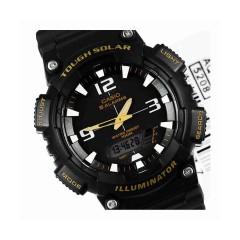Meteorite rocks are parts of rock or minerals that have fallen on Earth from outer space, usually in the form of meteorites or asteroids, which have been able to pass through the atmosphere, escape the force of friction and the intense heat they are exposed to during falling, such as meteorites and meteors . It is worth mentioning that the majority of meteorites burn in the atmosphere and do not reach the surface of the earth. Many scientists believe in a number of studies that have been done in this regard that the meteorites that affect the Earth often originated in the asteroid belt that exists between the planets Mars and Jupiter. As for its size, it is highly variable and varied. You may find it as small as the size of your mouth. It starts from less than one gram and may be found at other times of more than 60 tons.
Meteorological rocks have fallen on Earth since its inception, more than 4 billion years ago, as geological studies indicate. Large-scale collisions result in great energy that causes massive events and sometimes even radical historical changes (such as dinosaur extinction). However, the formation of these stones is sometimes highly exclusive, as they may contain rare minerals that are difficult to find on the surface of the earth and thus increase their value on this basis. On the other hand, there are other factors that determine the value of meteorites, including the source, characteristics, appearance and size.
When these meteoric rocks intersect with Earth's orbit, the meteor enters the atmosphere at high speed, causing luminous phenomena that we call the fall of meteors. This individual phenomenon should not be confused with the phenomenon of meteor showers, which affect the Earth while simmering through the orbit of a group of comets.
Types of meteorites
The types of these stones are divided into three main types, although there are a large number of subtypes. The main types are iron, stone, and stone iron.Almost all of the meteorites contain nickel and iron metals on Earth. As for the stones, which are characterized by the absence of any proportion of iron is very rare and difficult to find compared to the rest of the other meteorites and the probability of existence is low. Therefore, when you want to determine the quality of the meteorite that you need, you should basically check the percentage of iron in it where the lower the ratio the higher the quality, but if the percentage of iron has decreased quality, as there is an inverse relationship between them.
Ferro-concrete products
Most people never carry a metal meteorite in their hands during their lifetime. When someone picks up the stone, its reaction is accompanied by surprise and dazzle and feels that the stone is too heavy for a skull. This is because the stone contains some of the most intense materials on earth and is much heavier than most of the rocks on Earth. The percentage of iron in most of these stones between 90% to 95% , and the rest of the ratio consists of the element of nickel along with a number of other rare elements. These stones are divided into layers either through the chemical composition or the structure of the stone. The structural layers are determined by studying the alloys of two elements: iron and nickel: kamacite and tannite.
These alloys develop in a complex crystalline form known as the "Feldman-Schitten Formats" after the "19th century Count Ullis da Feldman Stein" was described. This mesh-like phenotype arrangement can be very beautiful, usually only visible when iron meteorites are cut into shiny slabs and then drilled with a light nitric acid solution. The camsite crystals listed in this process are measured along with the use of the average bandwidth to divide these marginal stones into a number of structural layers. Iron bars with narrow bands, less than one millimeter, are of good octahedrite , while large-scale stones are called coarse octahide .
Stones rock
Stone blocks represent the largest group of meteorites, in addition to being part of the outer shell of a planet or an asteroid. Many meteorites, especially those that have been on the surface of our planet for a long time, are similar to many Earth rocks. The newly discovered stones show a black fusion crust that looks as though its surface is literally burnt during its descent and atmospheric penetration. The vast majority of the stones contain enough iron to become a great deal of cohesion and bonding.
Some stone meteorites also contain small, grain-like impurities known as "condorules". These small grains originate in solar nebulae; they have evolved before the formation of our planet and the rest of the solar system, making them the oldest available stones for study. These stones, which contain these confers, are known as "condrites." The space rocks that do not contain kundrit are called the acondrites. They are volcanic rocks of space formed from fiery activity within objects during melting and crystallization, which destroyed every trace of the old cluster rocks.
Meteorites from the Moon and Mars
Are Martian and lunar stones found on Earth? The answer is yes, but on a very limited scale. It is estimated that more than 100 species of lunar stones were found, while in Martian stones they are estimated at 30 species. These stones are divided into a number of other subspecies, all of which belong to the so-called Kondrites. In terms of the value of these stones are the most valuable stones compared to other stones, where the sellers usually sell prices starting from a thousand dollars per gram, which makes them worth much more than the weight of the equivalent of gold.
Stones made of stone
It is the least abundant of the major species, accounting for less than 2% of all known meteorites. These stones consist of roughly equal amounts of nickel, ironand stone , and are divided into two groups: pallasites and mesosiderites, which are the most attractive of the meteorite stones. They are of great interest to collectors and consist of the nickel-iron matrix Packed with olivine crystals .When the olivine crystals reach enough purity and the emerald green color appears, it looks like precious peridot stones.
Mesocidritis are the smallest of the stone iron stones. It contains both iron nickel and silicate. Mesocidritis is a word derived from the Greek meaning "half iron," which is very rare. These stones represent less than one hundred stones for thousands of other officially listed meteorites.




